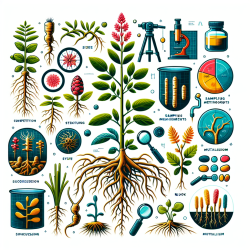Introduction
In the realm of plant sciences, understanding root ecology is crucial for both researchers and practitioners. The recent publication, A starting guide to root ecology: strengthening ecological concepts and standardising root classification, sampling, processing and trait measurements, offers a comprehensive guide to standardizing methods in root ecology. This guide is essential for practitioners looking to enhance their skills in root classification and trait measurement, ensuring consistent and meaningful data collection.
Why Root Ecology Matters
Root systems play a vital role in plant health and ecosystem functioning. They are responsible for water and nutrient uptake, anchoring plants, and interacting with soil microorganisms. Understanding root ecology can lead to better management practices in agriculture, forestry, and conservation, ultimately contributing to sustainable ecosystems.
Key Findings from the Research
The research outlines several key findings that practitioners can implement to improve their skills:
- Standardized Methods: The guide emphasizes the importance of using standardized methods for root classification and sampling. This ensures that data collected from different studies are comparable, facilitating broader ecological insights.
- Root Trait Measurements: It provides detailed protocols for measuring root traits, such as root length, diameter, and biomass. Accurate trait measurements are crucial for understanding root function and adaptation to environmental conditions.
- Ecological Context: The guide integrates ecological context into root trait analysis, helping practitioners understand the ecological significance of root traits and their role in ecosystem processes.
- Breaking Down Barriers: By providing a common framework, the guide aims to break down disciplinary barriers, encouraging collaboration across different fields of root ecology and ecophysiology.
Implementing the Findings
Practitioners can implement the findings of this research by adopting the standardized methods and protocols outlined in the guide. This will not only improve the accuracy and reliability of their data but also enhance their ability to collaborate with other researchers and contribute to a broader understanding of root ecology.
Encouraging Further Research
The guide also encourages practitioners to engage in further research by exploring new questions and hypotheses related to root ecology. By doing so, they can contribute to the ongoing development of the field and help address critical ecological challenges.
Conclusion
The A starting guide to root ecology is an invaluable resource for practitioners looking to improve their skills in root classification and trait measurement. By implementing the standardized methods and protocols outlined in the guide, practitioners can enhance the quality and comparability of their data, contributing to a deeper understanding of root ecology and its role in ecosystem functioning.
To read the original research paper, please follow this link: A starting guide to root ecology: strengthening ecological concepts and standardising root classification, sampling, processing and trait measurements.










